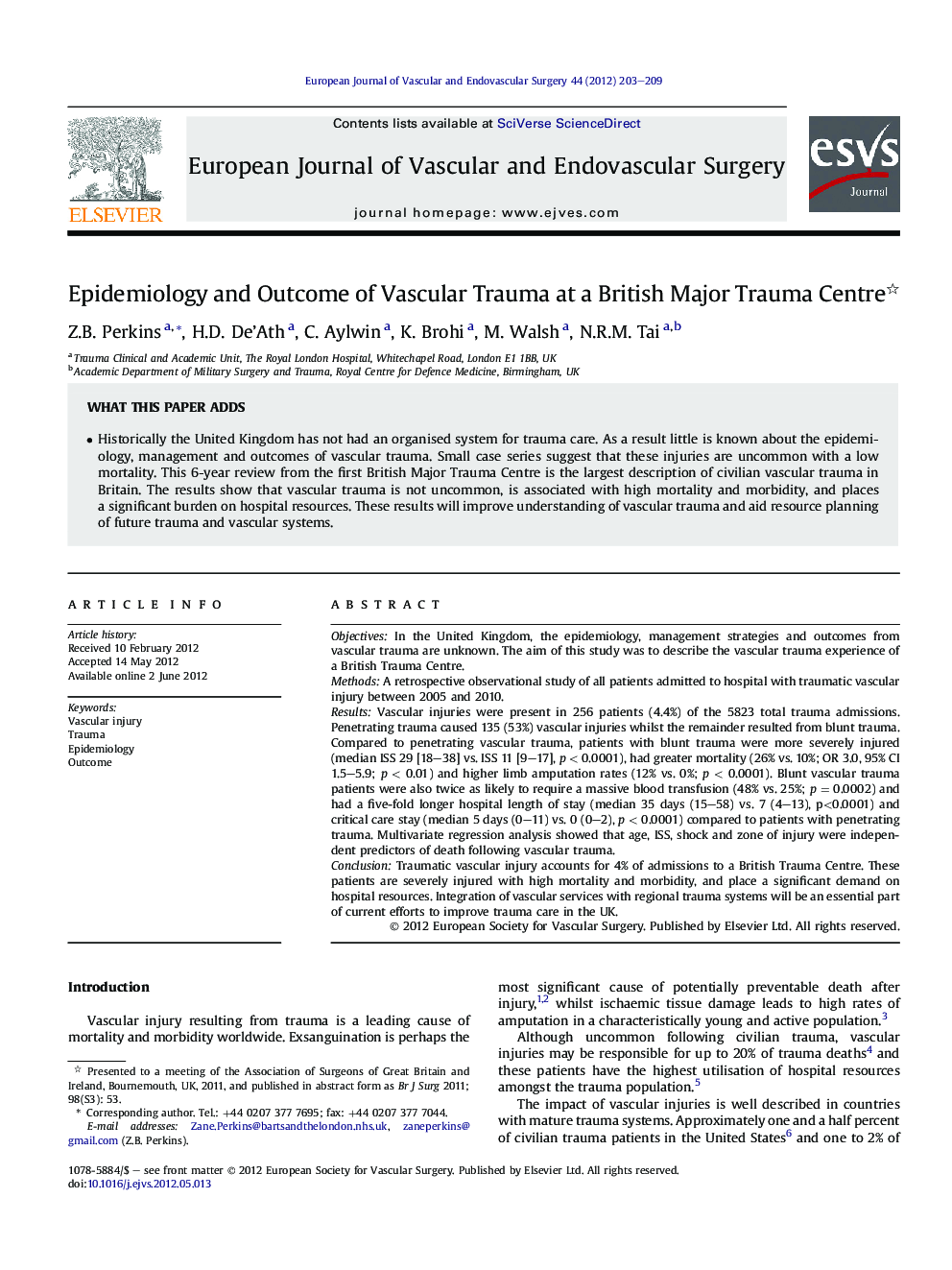| Article ID | Journal | Published Year | Pages | File Type |
|---|---|---|---|---|
| 2912641 | European Journal of Vascular and Endovascular Surgery | 2012 | 7 Pages |
ObjectivesIn the United Kingdom, the epidemiology, management strategies and outcomes from vascular trauma are unknown. The aim of this study was to describe the vascular trauma experience of a British Trauma Centre.MethodsA retrospective observational study of all patients admitted to hospital with traumatic vascular injury between 2005 and 2010.ResultsVascular injuries were present in 256 patients (4.4%) of the 5823 total trauma admissions. Penetrating trauma caused 135 (53%) vascular injuries whilst the remainder resulted from blunt trauma. Compared to penetrating vascular trauma, patients with blunt trauma were more severely injured (median ISS 29 [18–38] vs. ISS 11 [9–17], p < 0.0001), had greater mortality (26% vs. 10%; OR 3.0, 95% CI 1.5–5.9; p < 0.01) and higher limb amputation rates (12% vs. 0%; p < 0.0001). Blunt vascular trauma patients were also twice as likely to require a massive blood transfusion (48% vs. 25%; p = 0.0002) and had a five-fold longer hospital length of stay (median 35 days (15–58) vs. 7 (4–13), p<0.0001) and critical care stay (median 5 days (0–11) vs. 0 (0–2), p < 0.0001) compared to patients with penetrating trauma. Multivariate regression analysis showed that age, ISS, shock and zone of injury were independent predictors of death following vascular trauma.ConclusionTraumatic vascular injury accounts for 4% of admissions to a British Trauma Centre. These patients are severely injured with high mortality and morbidity, and place a significant demand on hospital resources. Integration of vascular services with regional trauma systems will be an essential part of current efforts to improve trauma care in the UK.
